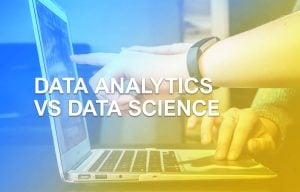What is Big Data?
John O'Shea
Big data is one of the most common buzzwords that is thrown around lately. This is rightly so, as it’s concurrent with the amount of data businesses and consumers generate worldwide giving value to big data analytics.
Simply put, big data analytics is the fuel behind every decision businesses make in every industry. Big data analytics focuses on examining large volumes of data ostensibly to gather insights, uncover hidden patterns and co-relations. You can leverage technology in analysing big data and getting answers fast. This was much slower and less efficient when using traditional business intelligence solutions.
In this guide, we help you understand big data, it’s importance, how it works, best practices, how businesses benefit from using big data and how you can create an effective big data strategy.
So then, What is Big Data?
You might have already guessed it. Big data refers to massive data sets that can’t be stored, processed or even analysed using traditional business tools. Millions of data sources across the world generate massive data rapidly.
Social media networks and platforms account for some of the largest data sources. For instance, Facebook alone generates at least 4 petabytes of data daily accounting for messages, videos, pictures and more.
Types of Big Data
Big data comes in three different formats: unstructured, semi-structured and structured.
1. Structured Data
This is any data you can store, access and process in a fixed format. There are many techniques for working with this kind of data and gaining value from it. Even then, as this data grows massively to multiple zettabytes, issues begin to arise. An example of structured data is an excel document.
2. Unstructured Data
This is data whose form is unknown hence the structure passes for unstructured data. This data is massive and posses several challenges when it comes to processing to derive value from it. A good example is heterogeneous data comprising a combination of videos, images and text files. Most businesses are unable to derive value from unstructured data despite possessing it.
3. Semi-structured Data
This usually encompasses both structured and unstructured data. Semi-structured data is structured data that isn’t defined in a relational format. For instance, web application data that qualifies as unstructured data will consist of transaction history files and log files.
Big data is usually characterised based on the following:
- Variety – The types of data i.e., semi-structured, unstructured and structured.
- Volume – The amount of data generated by different sources
- Velocity – The speed within which data is generated
- Value – Business value derived from the data
- Veracity – The degree to which the data can be relied upon
- Variability – Ways which you can format and use data
While you can’t liken big data to a specific volume of data, its deployments are often in terabytes, petabytes or exabytes of data generated and collected over a certain period.
Why is big data Important?
There are many reasons that make big data analytics important. Big data makes it possible for businesses to harness their data and use it in identifying new opportunities, improving operations, providing better customer service, taking actions that increase profits and revenue, turn leads to customers, make operations more efficient and ensure happier customers. Businesses can tap into big data for valuable insights into customers and effectively refine their advertising, marketing and promotions to increase engagement and conversion rates. Businesses that use big data effectively will have a competitive advantage over those that don’t for the simple reason that they’re able to make informed business decisions faster.
Who should use big data analytics?
Big data analysis is an asset to your business if you rely on swift decisions to stay competitive. This may be anything from identifying strategic markets, risk management, managing supply chains, and optimising delivery routes among others.
How Does Big Data Analytics Work?
To get relevant and valid results from big data analytics, data analysts and data scientists must have a detailed understanding of the data at hand and have a sense of what it is they’re looking for. This begins with profiling, cleansing, validating and transformation of data sets.
Once you’ve gathered and prepared all the data, multiple data science and analytics disciplines are employed to run various applications. They use big data analytics tools that support various capabilities and features. When analysing customer data, you can apply different branches of analytics as follows:
Social media listening – Your business can analyse big data to know what people are saying about your product or business to identify potential problems and the target audience for their marketing campaigns.
Comparative analysis – This assesses real time customer engagement and customer behaviour metrics to compare a company’s services, products and branding against their competitors.
Sentiment analysis – You can analyse all data you’ve gathered on your customers to reveal their feelings towards your brand or company, identify potential issues, determine customer satisfaction levels and how to improve customer service levels.
Marketing analytics – This will give you information you need to improve promotional offers and marketing campaigns for services, products and business initiatives.
Big Data Technologies
Although most people like to see it as a single solution, big data analytics is a combination of several tools and technologies working together to move, store, analyse or scale data. Even then, there isn’t a single technology that incorporates big data analytics in its entirety. Instead, there are different types of technologies working together to help you derive value from your information. They include:
Data management
Your data must be of high quality and governed well for reliable analysis. With the constant flow of data you must create repeatable processes for building and maintaining standards that ensure data quality.
Cloud computing
This delivery model is subscription based. Cloud computing guarantees fast delivery, scalability and IT efficiencies that are valuable for effective big data analytics.
Data mining
This technology makes examination of large amounts of data possible to unravel patterns. You can then use the information for further analysis to respond to complex questions.
Machine learning
This is a subset of AI with the role of training a machine, how to learn and make it possible to automatically produce models for analysing bigger, more complex data to deliver accurate results even on a large scale.
Predictive analytics
This technology uses data, machine learning techniques and statistical algorithms to identify the probability of future outcomes. It provides an assessment of what will happen in the future.
Text mining
This technology makes it possible to analyse text data from different sources including books, the web, and other text based sources to unearth insights you hadn’t noticed before. Text mining uses natural language processing and machine learning to extract data from blogs, emails, surveys, twitter feeds, competitive intelligence and more.
Data storage
It’s crucial to store large volumes of structured and unstructured data for data scientists and business users to access when they need to. A data lake will ingest large volumes of raw data rapidly while a data warehouse will store structured data in a central database.
Hadoop
This is an open-source software platform facilitating storage of large volumes of data as well as running of parallel applications on hardware clusters. It’s common for businesses because of the regular increase of data.
In-memory analytics
When you analyse data from system memory you can immediately draw insights and act on them fast. With this technology, you can remove data preparation and analytical processing latencies to create models and test new scenarios so your business can make better decisions and stay agile.
Benefits of Big Data for Businesses
Big data can help your business address a range of activities from lead generation to customer experience. Here are some of the benefits of Big Data:
- Fast and better decision making
- Smarter recommendations and targeting for your lead generation and outbound marketing campaigns
- Improved operations and collaboration between teams
- Product development
- Better customer insight to improve customer experience
- More insightful market intelligence
- Data driven innovation
- Better risk management
Best Practices for Big Data Analytics
Working with big data can be confusing and messy when you don’t know what to do. Here are some guidelines to help you establish a successful foundation to benefit from big data:
Align your business goals with data. Support your business decisions with data. It’s the best way to know if you’re on the right track.
Optimise knowledge sharing by setting up a center for excellence where you share knowledge, manage communications and control oversight. This will help you increase your data capabilities and your overall information architecture in a systematic and structured way.
Align structured and unstructured data. Although it’s valuable to analyse data independently, you can get even better insights by drawing a connection between structured and unstructured data. This can be particularly useful for your lead generation campaigns and more.
Align with cloud operating model. Having a well-planned public and private security strategy and cloud provisioning will ensure better support for changing requirements.
Keys to Achieving an Effective Data Strategy
Before developing a big data strategy for your business, you must have knowledge of the data that is available to you, an understanding of business goals and an assessment of the need for more data to meet your objectives. Other important steps to include in your strategy are:
- Prioritisation of applications and planned use cases
- Identification of the tools and systems required
- Creating a deployment roadmap
- Evaluate internal skills to skills to determine internal skills to determine which between hiring or retraining is needed
You must also prioritise data quality management processes and a data governance program to ensure your sets of big data are consistent, clean and used properly. Other practices for managing and analysing data include using data visualisation for analysis and data discovery and focusing on your business needs for information over the technologies that are available.
Contact Growthonics today to learn how we can meet your Data Management requirements.
Subscribe to our mailing list
Find out how we can help
Our Offices
China Works,
Black Prince Road, Vauxhall,
London, SE1 7SJ
GROWTHONICS © 2022 ALL RIGHTS RESERVED






